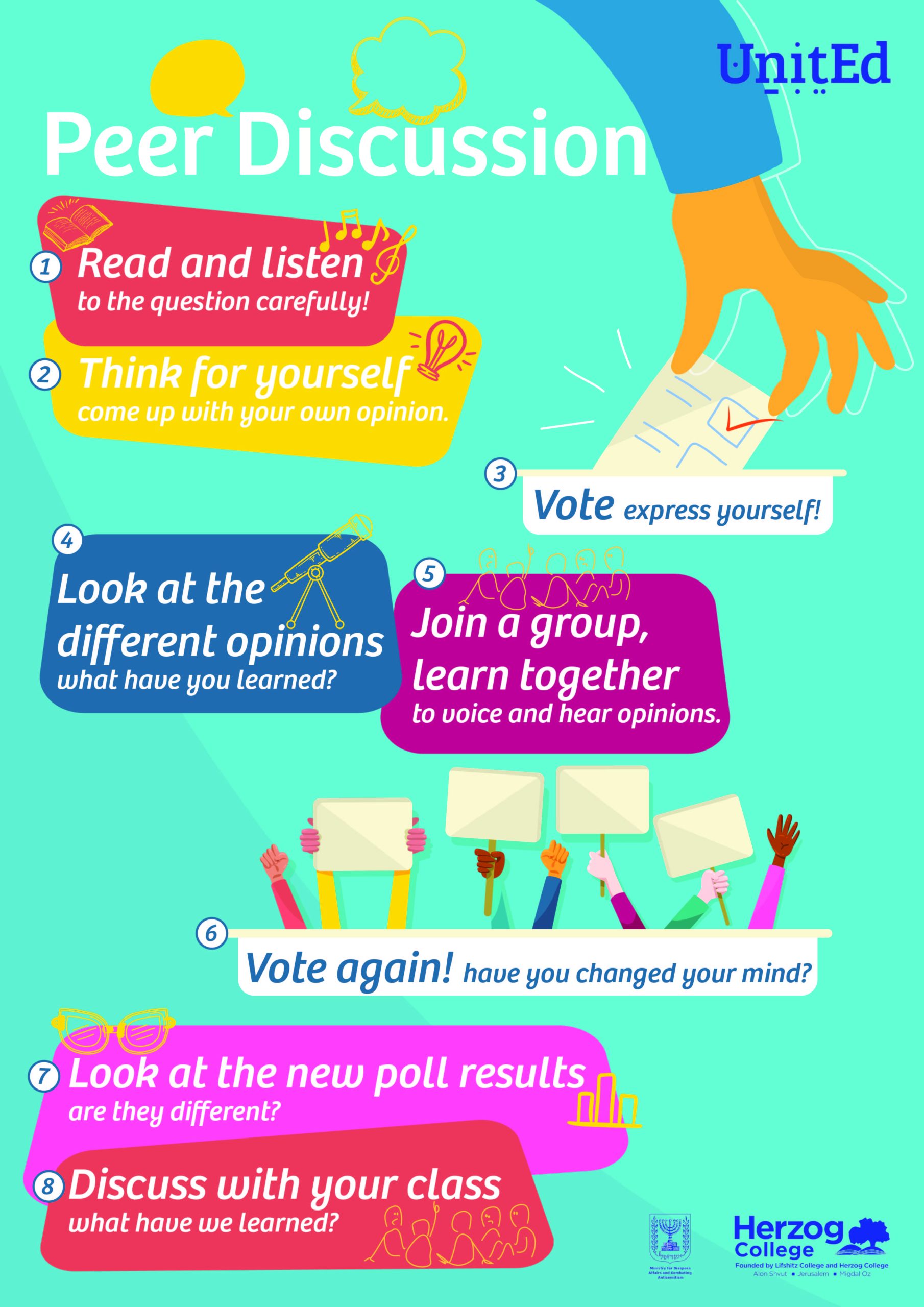Practice page – Peer Discussion
Peer Discussion
ActiveLearning Value Based
Learning Collaboration Self Directed
Learning https://www.youtube.com/watch?v=XHOmBV4js_E

What Is This?
Peer discussion is a structured practice which encourages developing ideas, opinions and understandings, both individually and collaboratively. Peer discussion involves students discussing concepts or ideas in small groups to ensure deep understanding. By following the steps of this practice students have a chance to think, express, listen and then rethink individually and as a group. Students who’ve actively argued for and explained their understanding retain their knowledge longer. When using peer discussion in the classroom, students also gain a sense of confidence in their ability to explain their opinions and explore further complex topics. Polling allows students to create a meta-cognitive understanding of their learning process.
Learn MoreHow To Use It?
In the beginning of the session an idea or concept is taught followed by a question which is presented to the students. Students take a few minutes to think of their individual answers and express them in writing. To gain insight as to the range of opinions the teacher then presents a multiple choice poll. The students are then asked to choose an option which suits their individual opinion. After viewing the class poll results, the teacher forms peer discussion groups. Peers re-think in groups to try and deepen their understanding. Group discussion often results in students explaining concepts and providing clarifications to their peers regarding their opinions and choices. After peer discussion, the poll is repeated and results are discussed with the class.
When To Use?
Peer discussion can be used when presenting complex aspects or questions that require forming opinions. Peer discussion can be used as an introduction lesson to arouse curiosity, or as ways to deepen understanding of a studied concept.
How To Assess?
After discussing in groups or answering polls or votes, students can write a one-minute ted talk or make a mind map on the taught subject. Assessment can also include reflective writing on the topic of “how or why my thinking changed / what I learned from others”.
Peer Discussion Flow
01 Read More Present a topic and ask a meaningful question relating to it. 02 Read More Have students think individually and express their opinion in writing. 03 Read More Present the class with a multiple-choice polling question, have them vote for their preferred answer. 04 Read More Pause to discuss the results of class polling. 05 Read More Have students form peer discussion groups to discuss their individual answers. 06 Read More After group thinking, have students individually respond to the poll again 07 Read More Discuss the new poll results, new understandings and learning process as a whole. Previous Next Hang A Visual Flow In The Classroom Download